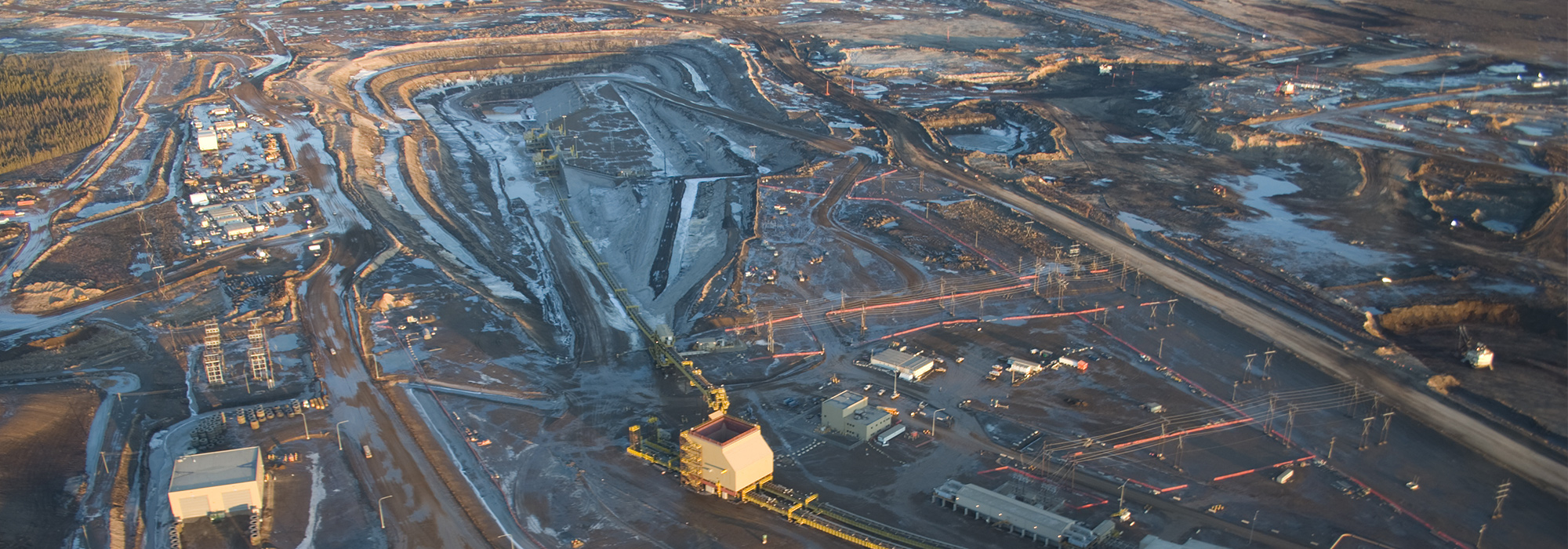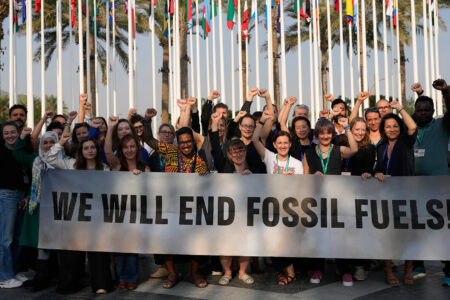
There’s no doubt that most Canadians want sustainable energy. In 2009-10 the Energy Council of Canada (ECC) held a series of Canadian energy forums that provided a grassroots approach to assessing the energy picture in Canada, recognizing regional diversity and the mix of government players. According to the ECC report,
Every jurisdiction in Canada is fully committed to addressing the twin challenges of energy supply and climate change, without any reservation on the need to address the issue of CO2 emissions…Serious movement on climate change is desired by most Canadians and it is promised at all levels, but it is particularly evident among sub-national jurisdictions.
The ECC’s forums showed that Canadians want certain other things, too: we want energy to be an economic driver in every region of the country, and we want Canada to continue to be an energy supplier to North America and the world.
Most of us would add a couple of items to this list of « wants. » We want energy to be affordable. And we want reliability: a balanced energy system that meets our energy needs in all seasons, without blackouts, brownouts, shortages or incidents that harm people or the environment.
The ECC called its report Building on Strengths because it « reaffirmed the value of Canada’s multi-jurisdictional system » and « deepened appreciation of our achievements. »
This article pursues the ECC’s theme that we already have the foundations of what we want in Canada’s energy system — and that we have an opportunity to build on them for the future.
Canada has high-quality uranium deposits and a highly developed base of nuclear technologies, including power generation, medicine, food safety, mining and processing, and materials science — in all of which Canadians have done well, as innovators and as businesses.
That Canadian power reactor designs have been sold in six other countries — against substantial US, Japanese and European competition — is a remarkable technological and commercial success story, especially considering that they were developed and marketed independently by a small country, and only for civilian uses. Twenty-nine commercial CANDU reactors have been built, and CANDU remains a successful and viable set of designs — now marketed in the form of the Enhanced CANDU 6 (EC6) and ACR-1000. Management of this business has passed to CANDU Energy Inc., and Canadians will soon see what private industry can do with this opportunity given the current nuclear revival, which is being led by emerging economies.
“Every jurisdiction in Canada is fully committed to addressing the twin challenges of energy supply and climate change, without any reservation on the need to address the issue of
CO2 emissions….Serious movement on climate change is desired by most Canadians and it is promised at all levels, but it is particularly evident among sub-national jurisdictions.”
Here in Canada, nuclear produces more than half of Ontario’s electricity, and the provincial government’s Long Term Energy Plan sees this role continuing. The plan calls for the addition of two units at Darlington and for the midlife refurbishment of 10 existing reactors in Ontario. CANDU units are also installed in New Brunswick (where a midlife refurbishment is nearing completion) and Quebec (where a refurbishment decision is due in the near future).
Refurbishing CANDUs at midlife is popular among utilities that operate the units, as it is a minimal-carbonemissions option that generates large numbers of highly skilled, highly paid jobs for several years. Refurbishing these nuclear units is one of the most effective ways to use public dollars to reduce carbon emissions, maintain generating capacity and create jobs. For a provincial energy ministry or major utility facing hard supply choices in an uncertain long-term environment, and with a desire to reduce emissions, nuclear refurbs are a very safe and cost-effective option. The refurbishment option further improves the already good lifetime economics of the CANDU reactor technology, by spreading capital and financing costs of the original build over two or three additional decades of plant life.
There are diverse examples of nuclear energy being used for process heat applications such as smelting minerals and desalinating seawater. And today there are various new nuclear reactor technologies available or on the horizon (generation 3 and 4 reactors, small modular reactors and others) that promise to make nuclear power options even safer than they currently are, as well as easier to finance.
Canada’s oil sands resource consists of approximately 1.6 trillion barrels of bitumen, of which over 300 billion are expected to be recoverable — more than the estimated reserves of oil in Saudi Arabia.
The development of the oil sands has repeatedly faced difficult technical and economic challenges. While private industry was the main driver and investor, public-sector actors played a significant role, notably the Alberta Research Council and the Alberta Oil Sands Technology and Research Authority (AOSTRA — created in 1974 and wound down in 2000). Backed by industry consensus and assisted by economic policy through such measures as royalty and tax adjustments, these public-sector champions enabled the development of the oil industry that Canada has today: our largest export earner and a huge wealth generator for the private and public sectors.
Capturing more of the value of this resource within the Canadian economy is of interest to many in policy circles. So would be extracting the bitumen in ways that mitigate greenhouse gas emissions and conserve cleaner fossil fuels. Among the options would be to apply nuclear power in place of natural gas to generate the heat needed for bitumen extraction. While innovators in the oil sands industry are aware of the long-term possibilities of nuclear, for the most part they are currently occupied with closerto-deployment technical advances.
Ontario’s provincial Auditor General recently reported that in 2010, only 14 percent of Ontario respondents thought increasing the use of renewable energy would lead to electricity price increases. At the same time, the Ontario Energy Board was concluding that a typical power bill would increase about 46 percent in five years, and more than half of that increase would be due to contracts for renewable power.
Nuclear, on the other hand, remains one of the most affordable and reliable sources of electricity worldwide, one that has been chosen by all of the large developed economies. While nuclear power requires high upfront capital investment, it faces low and stable costs for fuel and operations — minimizing the risk of fuel price volatility. And as a price is put on carbon emissions, nuclear becomes still more attractive.
As the OECD reported in a 2009 paper, Financing of Nuclear Power Plants, « studies comparing the costs of electricity generation from different sources indicate that nuclear power is competitive on a levelised cost per kWh basis (particularly when the costs of carbon dioxide emissions are taken into account). »
Canada’s electric power supply, particularly in Ontario (where nuclear provides more than half of all power), is more affordable, more reliable and cleaner because of nuclear. Because all sectors use electric power, this strengthens the entire economy and makes our entire energy system lower-emitting. As a direct result, energy-consuming industries such as auto manufacturers are more willing to locate in Canada, and our resource-processing industries that use electricity are more export-competitive.
The nuclear industry may be the only industry that is accountable for knowing where every kilogram of its waste is — and, moreover, pays to manage it. Nuclear power plant operators in Canada set aside funds to cover the decommissioning of their plants in the future and the disposal of radioactive materials. The price paid for nuclear power in Canada includes provision for these costs. Canada’s used nuclear fuel is managed at licensed interim storage facilities at nuclear generating plants. In the future, most of this used fuel could be reprocessed to make new nuclear fuel, reducing the amount of final waste to a small fraction of the current volume. The Nuclear Waste Management Organization (NWMO) is now implementing an adaptive phased management approach for the long-term management of spent fuel.
Finally, nuclear is a home-grown, Canada-based and high knowledge industry. Salaries in the nuclear industry average over $100,000 per year. Uranium mining is a leading employer of Aboriginal people in Canada. And ongoing operations and refurbishments are expected to support almost 700,000 person-years of employment through 2044 in the nuclear power sector alone — even without any new plants being built.
Bringing the oil sands to large scale commercial operation required decades of effort, with active involvement from both business visionaries and the provincial government. Bringing nuclear power to the oil sands is a challenge of a similar scale. It has been investigated tentatively over the years, with carbon mitigation being a major motive. Another motive was the fact that fuel cost is a very high percentage of gas-fired power costs, but a very small percentage of nuclear power costs, making nuclear energy an effective hedge against fossil fuel prices, as well as against greenhouse gas (GHG) emissions.
Currently deployed reactor designs would not be easy to apply to bitumen extraction in the oil sands. They require large, permanent installations with large support staffs. There are also questions about whether the steam they produce would be of adequate temperature and pressure for directly applying heat to oil sands operations, where steam would need to be piped some distance to the bitumen deposits. Even with these challenges, however, nuclear appeared in a 2003 study by the Canadian Energy Research Institute to be approximately competitive with natural gas in in-situ applications.
That Canadian power reactor designs have been sold in six other countries — against substantial US, Japanese and European competition — is a remarkable technological and commercial success story, especially considering that they were developed and marketed independently by a small country,
and only for civilian uses.
Newer reactor designs such as the Enhanced CANDU 6, the Advanced CANDU Reactor (ACR-1000) and other generation 3 and 4 reactors, some of which are close to deployment but have not yet established multi-year track records in operation, will further advance the safety of nuclear energy and could substantially improve its economics. Also, several small modular reactor (SMR) designs are being promoted — in varying degrees of proximity to deployment — with promises of further reductions in the financing, building and maintenance costs of nuclear energy, improving its applicability to nonpower uses. These promised advances are mainly based on SMRs’ portability, modularity, steam characteristics and maintenance needs.
With a number of reactor technologies now approaching or undergoing « pre-licensing vendor design reviews » with the primary regulator (the Canadian Nuclear Safety Commission), the menu of options for using reactors in an application like the oil sands has grown significantly. As a result there is considerably more scope than there was at the time of the 2003 study for a serious, objective evaluation of the technical possibilities.
Alberta’s Provincial Energy Strategy (2008) recognizes that Canada’s main energy-producing province is entering a future where emissions of carbon into the atmosphere will be constrained. It also stresses the role of technology in realizing its vision for the province’s energy future.
While Albertans, like most Canadians, may be conceptually open to the idea that ambitious technological changes may be needed or warranted, mobilizing actual investment dollars for unproven technologies is difficult. So is mobilizing support for the idea that public-private collaborations may be necessary to push those technologies toward commercial deployment.
Conversations with a number of industry experts in Alberta in mid-2011 elicited views like these:
- « When they advance the technology, we might be interested. It’s too far from deployment right now. »
- « Coal and gas are abundant and cheap here, at least for now. Why should the province help nuclear, an outside industry, rather than coal or gas? »
- Nuclear will be the likely option because it’s the alternative with no greenhouse gases. But it takes time to develop that option.
- « The oil industry is actually quite risk-averse. They need to see a new technology demonstrated before they’ll invest in it. »
Those are anecdotal and attitudinal comments, but they reflect an industry state of mind: there is an economic opportunity in nuclear that is not being seized.
The nuclear industry may be the only industry that is accountable for knowing where every kilogram of its waste is — and, moreover, pays to manage it. Nuclear power plant operators in Canada set aside funds to cover the decommissioning of their plants in the future and the disposal of radioactive materials.
Nuclear as an energy source offers vast potential as a way to reduce GHG emissions, and as a source of industrial process heat. The menu of reactor technologies available is growing. These technologies, whether CANDU or others, can be applied to in-situ bitumen extraction from western Canada’s oil sands — a resource that is greater than the oil in Saudi Arabia but extracted by a process that currently uses fossil fuel and that suffers from widespread negative public perceptions of being « dirty. » This merger of nuclear and bitumen opportunities can grow and strengthen our innovation system, while conserving natural gas, mitigating the oil sands’ carbon emissions and simultaneously facilitating new economic pathways for bitumen extraction.
The likely steps to realizing this opportunity could be the following:
- first, some academic and/or think-thank studies to build awareness of the scope of the opportunity;
- second, a technical survey of the bitumen operations’ energy requirements, and of the available nuclear technologies, to shorten the list of technical options; and
- third, a multi-stakeholder technol-ogy development process, aimed at narrowing the technology gaps to a point where cost ranges and time frames would be sufficiently defined that business models could be contemplated.
The third step involves a process like the one that made the oil sands economically viable in the first place. As with oil sands development, economic policy measures may become part of the program; obviously, for example, a price on carbon emissions would help to accelerate this and many other advances in low-emission energy technologies. Whatever mix of measures is ultimately adopted, the application of any nuclear reactor design to the oil sands requires public-private collaboration, driven by an industry consensus to proceed and based on a shared vision of the opportunities.
Speaking of shared vision and opportunities, what if nuclear units could easily replace end-of-life, fossilfuel-fired units at Canadian generating plants, with only moderate reinvestment in the plants and surrounding grid?
What if small modular reactors — meaning affordable, reliable, factorybuilt, transportable modular reactors generating as little as 25 megawatts of power (1/40 of a current large reactor’s output) — became as practical as small, run-of-the-river hydro projects?
What if all the heating and diesel fuel that’s currently burned in small northern communities, military installations and mining operations could be saved — and the emissions virtually eliminated?
What if these, combined with the range of « nuclear kick-start » measures adopted in the United States, and the nuclear revival in emerging economies, further renewed and grew the menu of nuclear technologies now available in North America?
What if much of the natural gas and other fossil fuels that are now consumed in our resource-processing operations could be affordably replaced — without a need to capture and store carbon?
We don’t have all the answers, but we have some of the important ones.
Canada would have more competitive and sustainable natural resource industries — a supplier to North America and the world, and an economic driver in every region.
We could satisfy the aspiration for GHG reductions that exists across regions and levels of government.
We would have an affordable, minimal-emissions power grid nationwide, based on nuclear, hydro and renewables.
We would have cleaner air, healthier rural and Aboriginal populations and more skilled, highly paid jobs.
And we would have strengthened a set of technology clusters — in medicine, food safety, materials and mining — that supports our whole science, technology and innovation system.
In other words, we’d have achieved what we want: sustainability, affordability, reliability, growth, competitiveness and innovation.
The opportunity in bringing nuclear to the oil sands should stand on its own merits, and we have a responsibility to future generations to evaluate it based on the facts.
But having a vision of what we want, and the imagination to get there, is indispensable to winning as a country. The successes we have today in Canada’s nuclear and oil sands industries, the pioneers who foresaw them and the roads we travelled to achieve them tell us that.
Photo: Shutterstock








